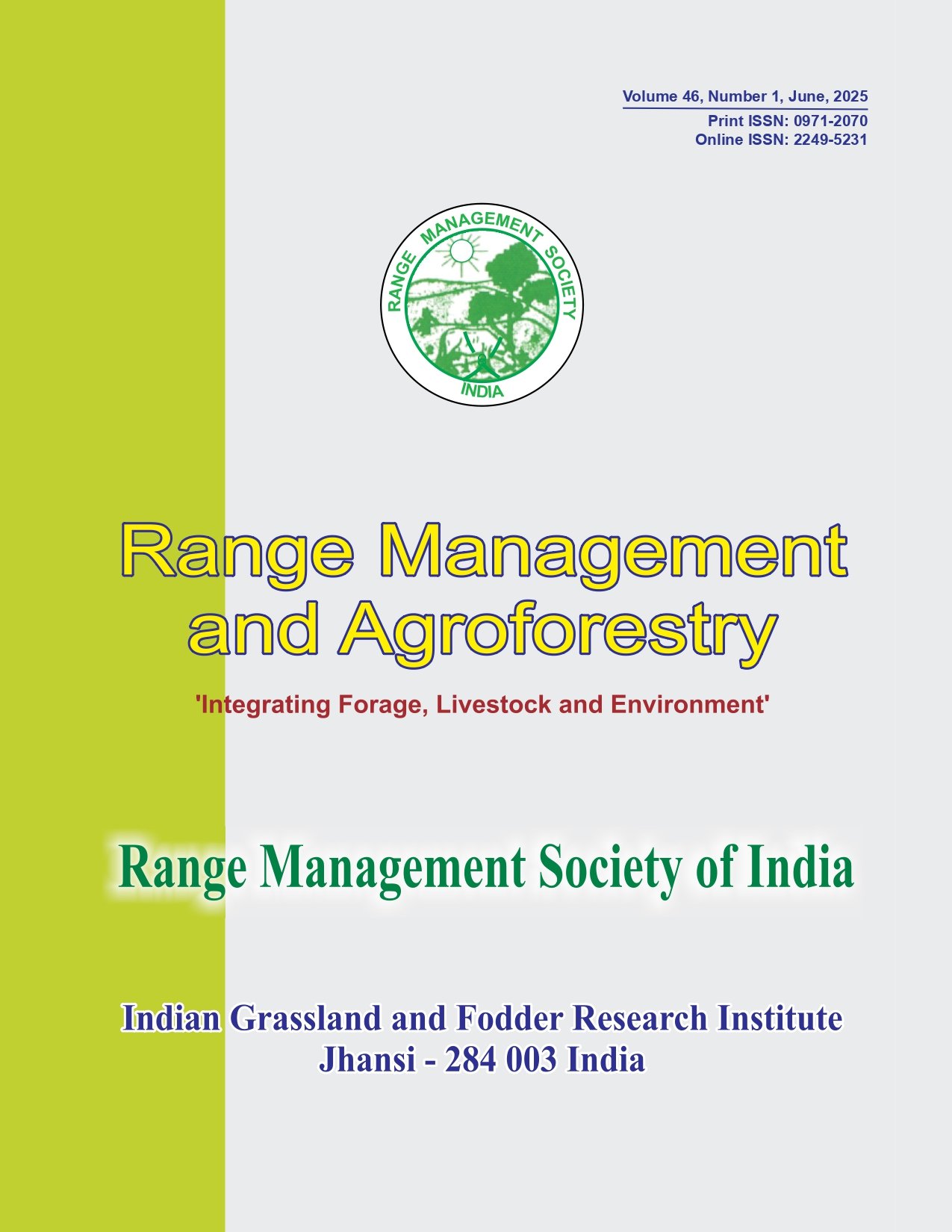Effect of intercropping and zinc management on weed density and fodder yield in oats
DOI:
https://doi.org/10.59515/rma.2024.v45.i1.24Abstract
A study was conducted to investigate the effect of intercropping and zinc application on weed density and forage yield in the Bundelkhand region during the Rabi season of 2020-2021 at the Research Farm of Rani Lakshmi Bai Central Agricultural University, Jhansi. The experiment comprised eight treatments with sole cropping of oat (CS1) and intercropping of oat with berseem (CS2)] in the main plot and four nutrient management practices [control (NM1), recommended dose of fertilizers RDF (NM2), recommended dose of fertilizers with zinc sulfate (NM3) and recommended dose of fertilizers with nano zinc (NM4)] in sub-plots in split plot design. The results showed that the weed density (150 m-2) and weed biomass (26.1 g m-2) in CS2 was found significantly lower than CS1 (186 m-2 and 34.5 g m-2, respectively). NM4 treatment had significantly lower weed density (158 m-2) and weed biomass (25.6 g m-2) than NM3 (215 m-2 and 45.13 g m-2) and NM2 (175 m-2 and 25.6 g m-2) among nutrient management practices. Also, intercropping + RDFnZn treatment produced significantly the highest green fodder yield (57.3 t ha-1) when compared to the rest of the treatments








